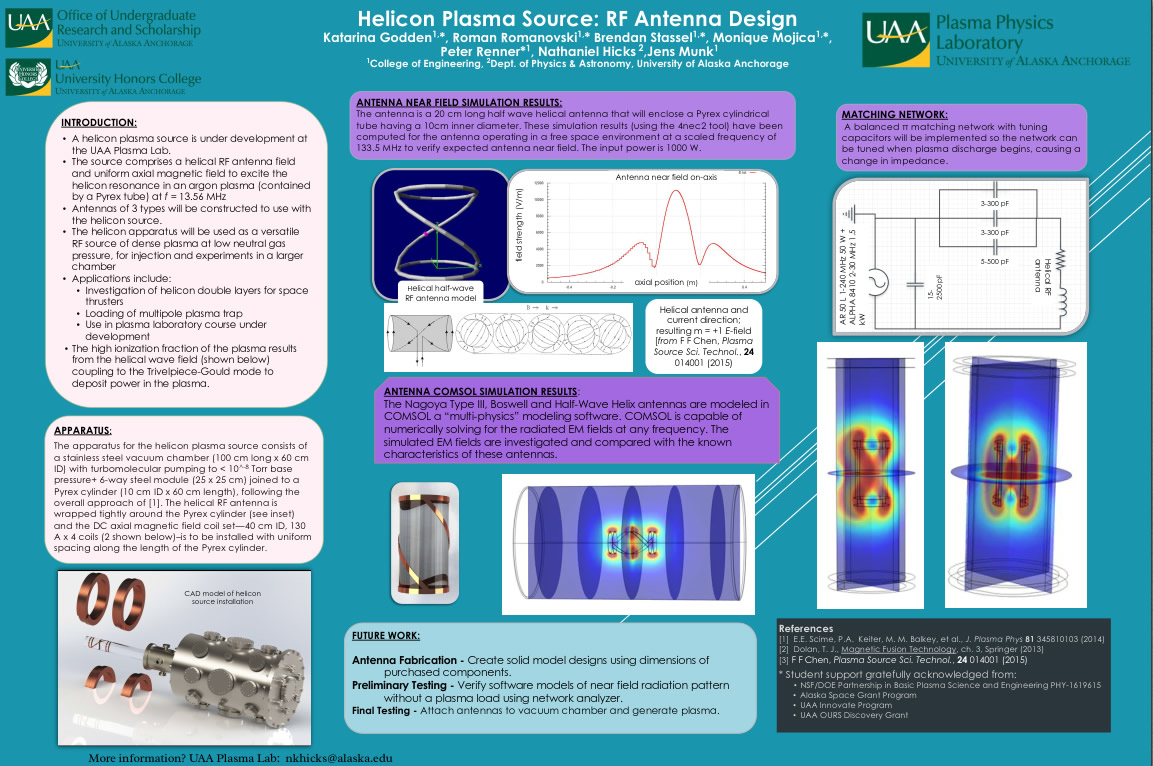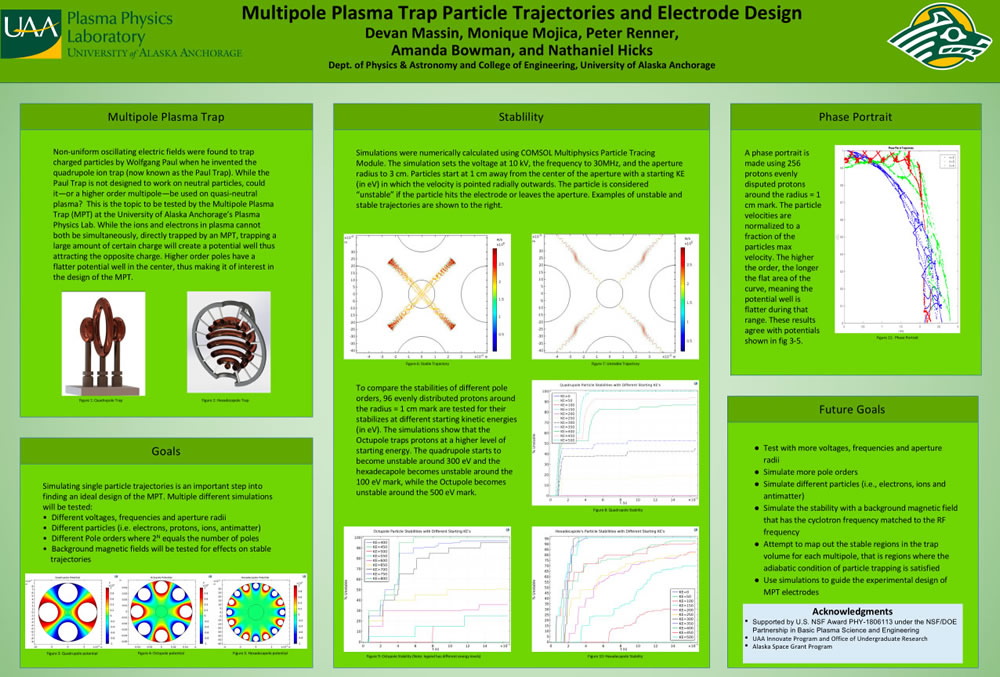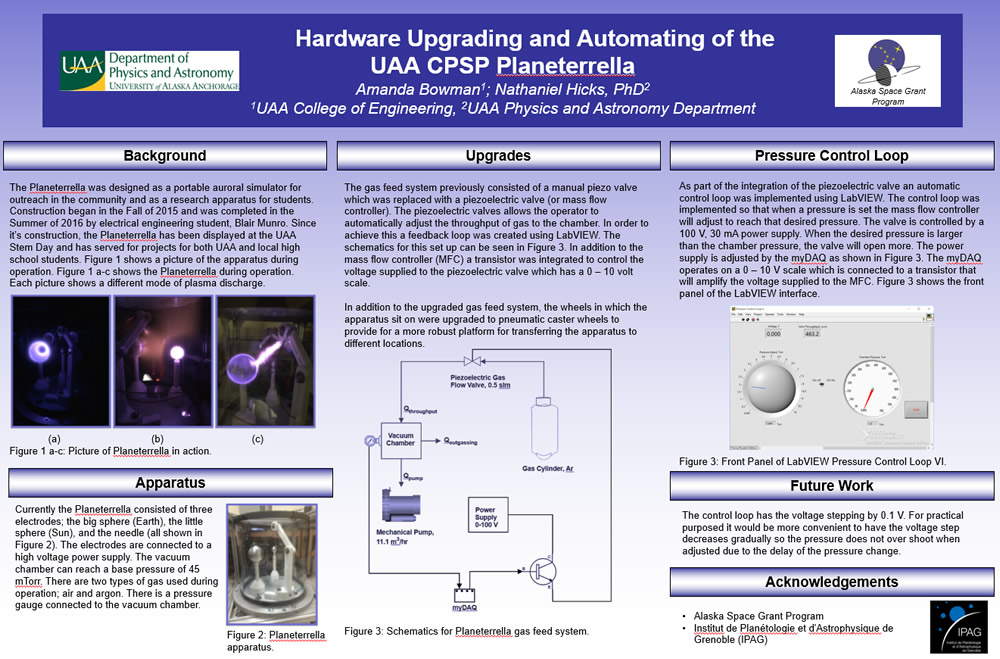Projects Overview
- Biomedical Plasma
- Helicon Source
- Multipole Plasma Trap
- Planeterrella
- Probes & Diagnostics
- SCARPH Outreach
Plasma applications to the biomedical field are growing rapidly, from sterilization of unwanted bacteria to wound therapy to cancer treatment. The interdisciplinary connections between physics, chemistry, and biology are especially exciting in this area. In the Plasma Lab, we are studying various means of atmospheric pressure plasma discharge, and the accompanying production of reactive oxygen and nitrogen species (RONS) that yield beneficial biological effects.


The Helicon Plasma Source (HPS) development in the Plasma Lab focuses on the design and construction of: an extension of our ultra-high vacuum vessel to include a source chamber, a radio frequency antenna to couple energy to the plasma, and magnetic field coils that allow the helicon mode in particular to be excited. The HPS will provide a high density, low neutral fraction plasma for studies of spacecraft propulsion and to feed other experiments in the main chamber.


In the experimental and computational Multipole Plasma Trap research, radio frequency (RF) multipole electric fields are used to trap low-mass particles in the plasma, and these in turn trap oppositely charged high-mass particles. The resulting confined quasi-neutral plasma is a good test bed for basic plasma phenomena, especially the interaction of the RF with the boundary of the plasma.




The Planeterrella experiment simulates certain aspects of Earth's aurorae, and is an excellent hands-on platform for students to become familiar with plasma phenomena and techniques. This apparatus is highly visual, and is portable for mobility to various venues for demonstrations and outreach. In 2016, electrical engineering undergraduate Blair Munro received an Alaska Space Grant Fellowship to support successful creation of the UAA Planeterrella apparatus in direct collaboration with expert university machinist Corbin Rowe.


The Plasma Lab is developing several standard plasma diagnostics and measurement techniques, such as Langmuir probes and microwave interferometry. Our group is also investigating novel diagnostics, for example in the area of plasma polarimetric magnetic field measurements. This is an area where students get hands-on experience in taking their design all the way to a working installation and collecting plasma data to analyze.
SCARPH is: SouthCentral Alaska Resources for PHysics, and represents a growing community of physics educators, students, and enthusiasts. The Plasma Lab supports this important effort to increase opportunities in our part of the state for physics higher education and physics-related careers.
